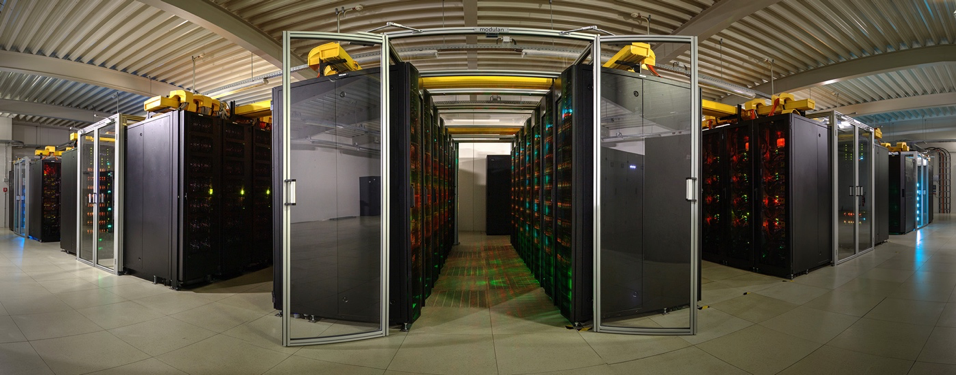“Amazon is trying to dim the sun.” Or, so you may have heard as breaking news this week. While Bezos has surely taken the public by surprise with his initiatives in the past, the present scenario has more to do with climate modelling. Amazon is changing the face of climate modelling by introducing, on a large scale, cloud computing to go with the supercomputers needed for climate simulation. Let’s backtrack a little and look at this.
Supercomputers for simulations
Organizations have been using supercomputers to create climate models. They have been housed at meteorological agencies and climate research facilities across the globe. Essentially, a larger computing power allows researchers to create more accurate assessments of the impact of climate change and find solutions to those challenges. Accelerated computing is required to link up the thousands of processor cores and the several layers involved.
Supercomputers need support too
But considering the size of the ‘super’computers, they can not be moved and the dedicated processings have to happen in one given location. This makes it challenging to share the technology with more researchers and broaden the scope of progress in fighting climate change. With the increase in available data and models, the output from operational prediction models for climate change is updated regularly with hundreds of TB of workflows per day. It is no longer possible for just supercomputers to deal with the mammoth of data. There is the need to change the computing and data system by bringing computing to data and not the other way around. Cloud provides the ability to process and distribute such data.
The recent developments in the field allow cloud computing to act as a balancing and enhancing addition to climate model technologies.
Learn about the supercomputer facilities for climate modelling:
1. NCAR-Wyoming Supercomputing Center
2. German Climate Computation Center
3. NASA centre for climate simulation

Cloud computing to the rescue
This is what Amazon is aiming for. The company’s vast cloud computing infrastructure allows for more datasets to be stored and leveraged for the modelling, giving researchers more control over the amount of computing power they utilize. This modelling method on the cloud could prove revolutionary given the savings in cost and time taken running large supercomputers while reducing the barriers to this research. Additionally, cloud computing gives researchers more autonomy to cut down, adding or tweaking the models and variables. While this is possible with supercomputers as well, the time taken to set the system up takes away much of the time needed to work on the models.
Climate based research teams across the globe can collaborate on the cloud to share findings, modes and solutions regarding some of the pressing environmental issues of agriculture, drought, flooding, and human health. The studies play a huge role in ensuring timely climate-intervention responses and accelerating the progress of the time-sensitive climate problem.
Amazon, along with NCAR and Silver Lining, is building 30 simulations or climate models predicting the state of the world between 2035 to 2070. Kelly Wanser, the executive director of SilverLining, has marked this point in cloud computing as one where it can support such heavy workloads. For example, one of the simulations imagines a planet where humans have injected aerosols into the atmosphere in an attempt to dim the light coming from the Sun and cool down the Earth. While Amazon’s initiative has made the headlines recently, it is not the first or only research to leverage cloud. Microsoft has also popularised their cloud platform, Azure, to reshape natural disaster modelling by leveraging computing.
Learn about Amazon’s climate work: Amazon’s Climate Pledge
1. Amazon’s cloud implementation to reduce the carbon footprint in India
2. EU businesses to move to the cloud to become energy efficient
Implementations of cloud computing
Cloud computation is being utilised by organisations and research facilities across the various environmental domains. For example, forest conservationists were earlier bound to NASA’s satellite images to monitor and fight deforestation, but since the data wasn’t available in real-time, trees were felled before the people even had a chance to download the images. Cloud computing allows them with real-time data that reflects the pace and scale of deforestation, making it easier for them to predict, project and fight against crime.
The Weather Research and Forecasting model is a simulation model built on cloud computing, and has been adapted over various platforms for atmospheric chemistry, hydrological processes, and more. Several such types of research have been ongoing since 2015, such as Molthan et al. (2015) and McKenna (2016), that coupled WRF forecasting system or Earth modelling with AWS for real-time prediction, linking it to other climate models of the Regional Ocean Modeling System (ROMS) ocean model and the Simulating Waves Nearshore (SWAN) wave model. As a result, the researchers found an increase in real-time robustness, efficiency, and better development workflow.
The combination of supercomputers and cloud computing is paving the way for a collaborative and successful effort in overcoming climate change. The power and flexibility of compute with the transportive nature, extensive data storage, accessibility, and enhanced workflows of cloud, paint a hopeful future for the Earth’s environment.













































































